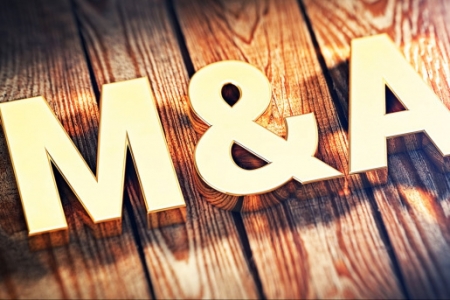Our SERVICES

Mergers and acquisitions (M&A) is the classic, fastest, and most reliable way to re-register/transform your business, as a result of which larger companies appear on the market.
Mergers and acquisitions are one of the most important aspects of the world of corporate finance, the main value of which is that, when joint, companies have greater financial value and market demand than working separately.
Mergers and acquisitions occur through the purchase/sale of a business:
- by acquiring assets;
- by acquiring ordinary shares;
- by exchanging shares for assets;
- by exchanging shares for shares.
How is the merger of the COMPANY?

A merger can be of different types, depending on the goals of the companies:
- A merger in which two companies merge and a new independent company enters the market, and the two merged companies cease to exist legally;
- A merger in which two companies retain the status of legal entities but transfer control rights over their companies to the new company that is being created.
Consolidation is a merger of companies in which one company retains its legal status, and those companies that join the main one lose their legal status; their rights and obligations pass to the main company of which they become a part. The consolidation can be considered, under certain conditions, as protection against the acquisition, since with the acquisition the acquired company loses all rights and obligations, and the main company establishes full control.
The acquisition is the establishment of full control by one company over the second (acquired). In this case, the acquired company loses its legal status, rights, and obligations, as a result of which it becomes part of the main company.
Types of M&A DEALS
Mergers and acquisitions take place in different areas of activity. From an economic point of view, mergers can be divided into three types, depending on whether the companies work in one industry or not:
List
- Horizontal mergers - two companies work in the same industry;
- Vertical mergers - two companies are at different stages of production (one company produces a service for the second company);
- Conglomerate mergers - companies work in unrelated industries;
- Generic mergers - companies produce interconnected goods (one company produces a certain product, and the second one produces spare parts for this product).
Goals of M&A
As a result of acquisitions and mergers, the company accelerates its growth in the market, increases demand, saves resources by increasing its scale; tax planning is optimized, assets are diversified, resulting in reduced financial and investment risks.
Stages of mergers and acquisitions
-
Stage 1 - Preliminary analysis of the company that is going to enter into the transaction is conducted: assessment of the need for the deal, identification of risks, and prospects. This is the first and most important step in mergers and acquisitions, as the company evaluates its financial condition in order to understand whether it can conduct its business. Understanding the current situation, the company moves on to the next step – finding a company for the transaction.
-
Stage 2 - Search for a company to conduct a transaction: compiling a list of potential companies after initial market monitoring, and checking them. Choosing the most suitable option among companies.
-
Stage 3 - Negotiations with the company selected at the previous stage. Negotiations are conducted to reach consensus on the acquisition or merger. At this stage, as a rule, a non-disclosure agreement (NDA) is signed, and companies discuss goals, prospects, and cost. At this stage, the companies either come to a common goal and sign an agreement of intent to conclude an M&A deal or interrupt and end negotiations.
-
Stage 4 - Preparing the company for M&A, which consists of conducting a full in-depth due diligence (legal, economic, financial, tax audit of the company, commercial, antitrust expertise, etc.), structuring the transaction and concluding the contract.
OUR M&A TRANSACTION SUPPORT SERVICES
List
-
Conducting Due Diligence of a transaction for various risks - verification of the legal, financial, tax, economic components (legal audit of company assets, tax debts, pending litigation, debts to contractors, encumbrance of property, etc.). Ссылка на услуги Due Diligence
-
Preparation of documentation for the acquisition of assets/shares - documenting the acquisition or merger.More.
-
Development of a purchase structure using option agreements (that is, until some point, it is possible to buy more shares at the price established in the contract).
-
Changing the management structure of the company (for example, the introduction of a board of directors, a supervisory board, the creation of committees, and the division of powers between them).
-
Creation and modification of company charters and shareholder agreements.
-
Registration of the actual transfer of shares in government bodies.
-
Obtaining permission to conclude a transaction from antitrust authorities, if applicable (if companies occupying a significant market share merge).
-
Representation in court/pre-trial settlement of disputes arising from an M&A transaction. Legal Advocacy Services
-
Preparation and legalization of company documents for the transaction - Legalization, attestation and translation of documents .





















































































